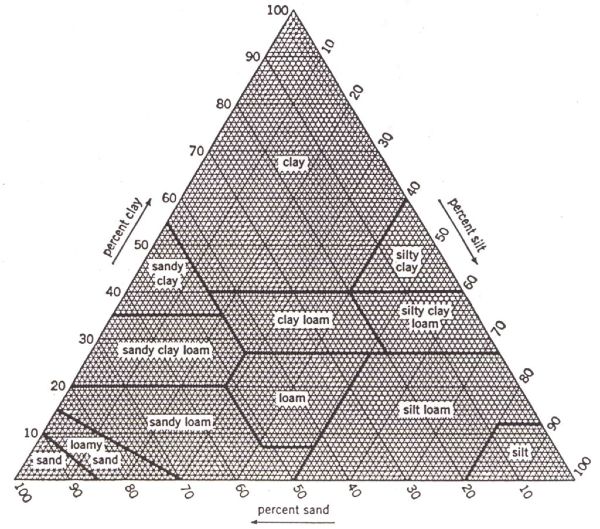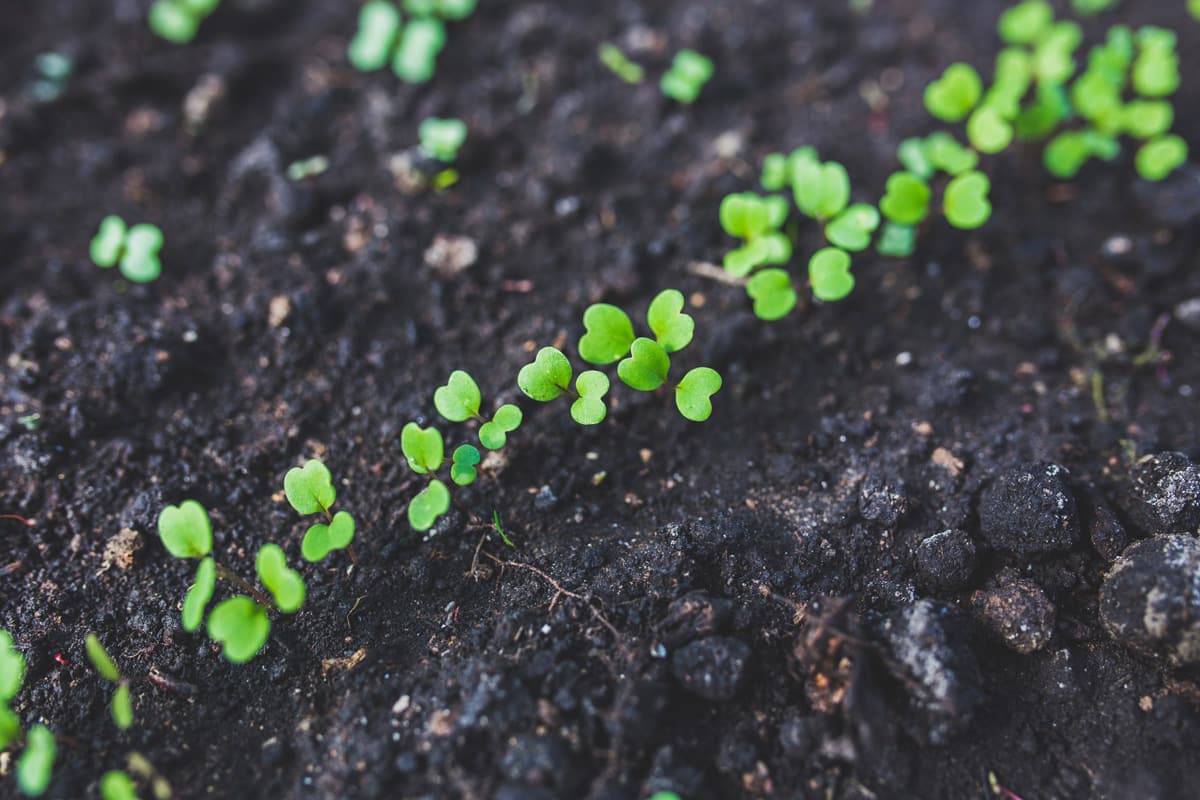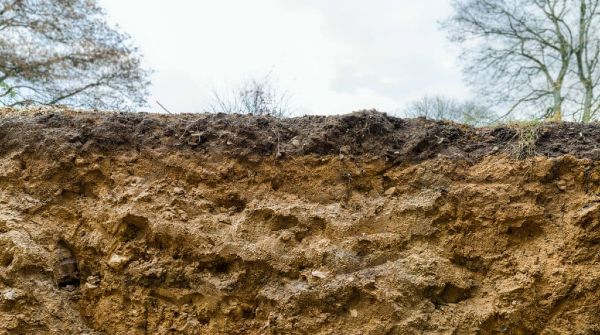03 Sep Understanding soil types
How do you know what soil type is in your garden and why does it matter? We’re looking at soil types and how they influence landscaping.
The soil in your garden plays a big part in its landscaping and is a vital factor in an initial garden design consultation. Even if you are planning a low maintenance garden with minimal planting, soil structure can have a bearing on layouts and construction methods.
As a landscaper wanting to create safe, long lasting and beautiful gardens I need to know about the subsoil and the topsoil because those two things have an enormous impact on construction techniques, on drainage and on plant choices.
The two layers of soil that interest a landscaper. Topsoil is crumbly, friable and home to plant roots and soil microbes.
Subsoil is less fertile but important for drainage and for creating a nice firm surface that we can build on.
What kind of subsoil is underpinning the garden?
Every piece of land has two main layers. The subsoil – which you rarely, if ever see. And the topsoil which is what plants grow in.
Subsoil has a big influence on water absorption and drainage. Getting the drainage right is what makes your garden work.
The subsoil is also what supports hard landscaping features such as fencing, patios and paths. Without it, your garden would turn into a bottomless pit of slop everytime it rained.
Just like a house, most hard landscaping features need to have firm footings otherwise they can shift and crack. Those footings need to stand on something solid and permanent – ie the subsoil. The type of subsoil you have and how far beneath the topsoil it sits will affect the way we build the sub-base for your patio or secure the posts for your fence.
Subsoil doesn’t contain many plant nutrients. Plants rarely thrive in just the subsoil. When we are managing a landscaping project, particularly if we are re-contouring a garden, we have to be careful how we organise the groundworks. Mixing the subsoil with the topsoil – or worse, putting them back in the wrong order – will severely restrict the type of plants you can use.
What type of topsoil is in your garden and why does it matter?
Topsoil is awesome. It’s so much more than just dirt.
- Houses a whole ecosystem of beneficial minibeasts and microbes
- Recycles dead organic matter into plant nutrients
- Holds onto roots so larger plants like trees don’t fall over
- Supplies flowers, lawns, edible plants etc. with food and water
- Soaks up rainwater and allows it to filter through to the subsoil and into water courses
- Has a low albedo which helps to keep our planet cool
- Absorbs impact when you walk on it – helping to reduce wear and tear on your joints
Topsoil comes in many different forms. Most of the gardens in Essex and Suffolk that the Holland Landscapes team have worked in have either a clay based soil or a sandy type of soil. Elsewhere in the UK we find organic soils, chalky soils, alkaline soils, acidic soils, loamy soils and everything in between.
Some plants are fussy about the type of soil they grow in. Knowing what type of topsoil is in your garden tells you two things
- Which plants should grow easily here
- How to improve the soil to meet the needs of any other plants you want to grow.
How do you know what sort of soil is in your garden?
Quick tests for soil type
The British Standard 3882:2015 for the topsoil you can buy talks about particle size as well as contamination and acidity . Soil is made up of varying proportions of sand, silt and clay. You should always buy soil from a reputable seller. For your own garden, unless you have a really specific need or worry, there’s no need to pay for soil testing. These simple kitchen experiments should be enough to answer your questions.
Friability – how easy will it be to work with your soil?
Pick up a handful of topsoil and squeeze it hard. It should form a fist-shaped ball in your palm. Now give it a prod.
- If it falls apart easily – you probably have a high proportion of sand in your topsoil.
- If it holds it shape for a moment and then crumbles, it’s likely to be a nice friable loam.
- Soils with a high proportion of clay in them will stay in that ball for ages – you need a powerful prod to break it down.

Soil scientists classify topsoil according to the proportions of differently sized particles that make up the soil itself. This chart shows the classifications.
To find out roughly what is in your soil, try this
Find yourself a nice sized glass jar with a lid. An empty pasta sauce jar is ideal.
Fill approximately one third of the jar with soil. If you see any beasties or big stones in there, remove them.
Now add water and watch what happens. The aim is to have the jar 2/3 full with water and soil.
- The water will soak through the soil to the bottom of the jar. How quickly does that happen? It’ll be quicker in free-draining sandy soils than in clay or silt soils.
- As the water level rises, you will probably see bubbles rising up to the surface. Topsoil contains quite a lot of air as well as minerals, plant nutrients and organic matter
Put the lid on the jar and give it a good shake. Now you have a muddy puddle in a jar. Nice.
Place the jar on a level surface and leave it untouched for 24-36 hours. When you come back to it, the soil will have settled so that you have a layer of dirt with clear(ish) water above it.
You might see some brown stuff floating on top of the water. That’s partially composted organic matter and it’s always good to see.
The soil should have settled into layers – the heavier grit and stones will have sunk first so they’ll be at the bottom. Next will be sand, then silt, then clay.
Now you have an idea of the proportions of the particles that determine soil texture. Nip down to the garden centre for a soil test kit to find out the pH or acidity of your soil. Most plants are happy in neutral or slightly alkaline soils but some prefer acidic soil. Once you know what you are dealing with you will know what you can grow easily and what will be more difficult to cultivate.
How will I know what will grow in my garden soil?
There is a wealth of information online to help you choose plants for your soil type. Don’t forget to factor in things like sun, shade and drainage too.
If you really don’t know where to start, why not contact my colleagues at Tapestry Design Studios? Katie and the team offer cost effective garden design packages that range from a simple list of recommended plants to a full garden redesign.
Find out about garden design and planting plans
Building a pond involves contouring subsoil and topsoil. See the before, during and after pics from a wildlife pond we completed near Frinton on Sea.





Sorry, the comment form is closed at this time.